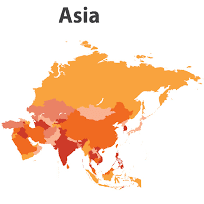A hushed anticipation settled across trading floors from Singapore to Seoul as subtle shifts in diplomatic dialogue began to ripple through electronic order books. Investors found themselves attuned less to corporate announcements and more to the tone and timing of conversations taking place far beyond the trading pits. In markets that have weathered abrupt turns before, this prevailing mood felt distinctly different, as if participants had collectively recognised that small policy imprints could soon redraw the contours of regional risk and reward.
In Tokyo, equities held firm despite a modest pull-back in technology shares, with sentiment buoyed by reports of fresh discussions between the world’s two largest economies. Traders leaned in as negotiators weighed the prospect of rolling back certain levies in exchange for concessions on intellectual property and financial services. Such exchange has rarely proceeded in straightforward fashion, yet current exchanges appear to carry a more pragmatic cadence, hinting at a tacit understanding that protracted tariff skirmishes threaten equally both exporters and manufacturers on either side of the Pacific.
South of Japan, Hong Kong’s benchmarks traced a similar pattern, where local investors balanced optimism over potential relief with caution born of past false dawns. Here the narrative hinges on two strands: first, whether a thaw in commerce thresholds might revive capital flows into companies long characterised by narrow trading bands; and second, whether any easing could persuade multinational firms to re-examine supply-chain footprints that were shifted in recent years to avoid levies. For value-focused managers, this presents a contrarian inflection point, since a genuine de-escalation could breathe life into sectors that have underperformed in the shadow of uncertainty.
Meanwhile, in Shanghai and Shenzhen, state-guided sentiment found its own reflection of the wider dialogue. Officials have reiterated their commitment to opening domestic capital markets further, yet the absence of fresh detail has left investors parsing each public remark for hidden clues. That selective opacity has reinforced the appeal of onshore leaders in new-energy and semiconductor segments, even as broader indexes tread near four-year peaks. Here, positioning requires nimbleness; funds rotating into areas poised to benefit from policy, while staying alert to any abrupt revision in tone from Beijing.
Down in Southeast Asia, markets displayed a more sanguine complexion. In Singapore and Kuala Lumpur, smaller economies showed a degree of insulation from headline volatility, with local banks and consumer names shrugging off global jitters. This divergence speaks to how Asia’s mosaic of markets now demands a tailored approach: some regions lean heavily on export-driven growth, others derive strength from domestic resilience. For allocators, calibrating exposures across this spectrum has become an exercise as much about geopolitical intelligence as about traditional valuation metrics.
Overlaying these regional dynamics is the gravitational pull of the US Federal Reserve’s next move. While commentary out of Washington has glazed over the minutiae of balance sheet reductions, any hint of a tilt in rhetoric could recombine forces already at play. Should the Fed signal a more dovish posture, the immediate impulse might favour risk assets, but for those with a longer horizon, the real signal will be whether such guidance unlocks capital in a sustained fashion or merely stokes a fleeting reprieve.
Against this backdrop, portfolio architects are revisiting their hedging frameworks. Currency plays, once the domain of specialist desks, have gained fresh attention as tools for seizing asymmetric returns. In particular, selective stance on the yen and the renminbi reflects wider assessments of policy divergence and capital flow trajectories. It is here that the art of investing reveals itself: recognising that markets seldom move in straight lines, but in arcs shaped by shifting negotiations, policy pivots and the ebb of confidence.
Fidelity Asian Values Plc (LON:FAS) provides shareholders with a differentiated equity exposure to Asian Markets. Asia is the world’s fastest-growing economic region and the trust looks to capitalise on this by finding good businesses, run by good people and buying them at a good price.











































